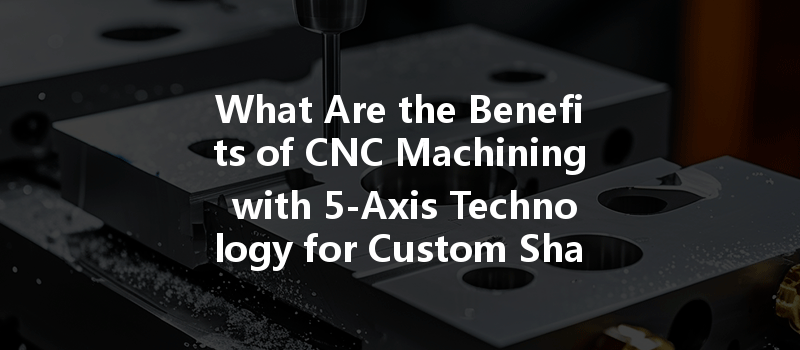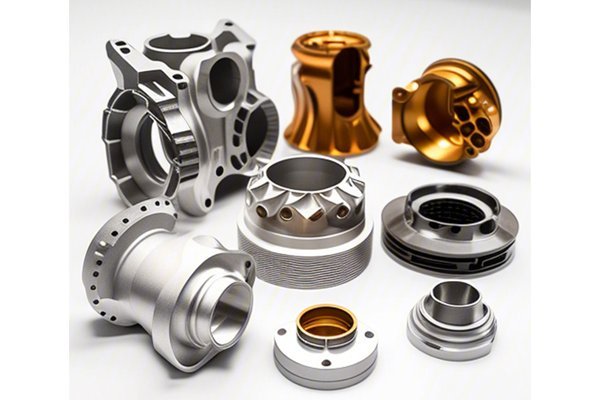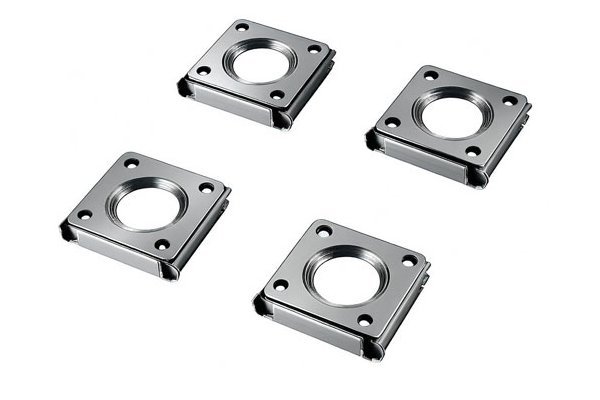: The Cutting-Edge of Manufacturing
Did you know that according to a survey conducted by the American Society of Mechanical Engineers (ASME), approximately 80% of engineers believe that embracing advanced manufacturing technologies like CNC (Computer Numerical Control) machining with 5-axis capabilities is crucial for staying competitive? In an era where precision, time efficiency, and customization are paramount, CNC machining has emerged as a game-changer in the manufacturing industry.
One standout feature of CNC machining is its ability to operate on multiple axes, and 5-axis machining technology, in particular, opens up a world of opportunities for creating intricate custom shapes and parts that were previously considered too complex or impossible to manufacture.
In this blog post, we will dive deep into the world of CNC machining, with a particular focus on the benefits of 5-axis technology. We will explore how it works, its advantages, applications, and why it is an essential investment for companies looking to innovate and expand their manufacturing capabilities.
Understanding CNC Machining
CNC machining is a subtractive manufacturing process that involves the use of computer-controlled machines to remove material from a workpiece to achieve the desired shape or size. This method is widely used across various industries, including aerospace, automotive, medical, and consumer products. The primary tools in CNC machining include mills, lathes, routers, and grinders, which work in tandem with advanced software to achieve high precision.
How Does 5-Axis Machining Work?
Traditional CNC machining operates on three axes: X (horizontal), Y (vertical), and Z (depth). In contrast, 5-axis machining adds two additional rotational axes, which allows the machine tool to rotate the workpiece, manipulate the tool, or both. This multi-dimensional capability enables the swift machining of complex geometries and reduces the need for fixturing.
Here’s a breakdown of the five axes:
This setup enables the CNC machine to approach the workpiece from virtually any direction, allowing it to produce parts with intricate details, angles, and curves that are essential in custom shape production.
The Benefits of 5-Axis CNC Machining
As a leading technology in the manufacturing sector, 5-axis CNC machining offers distinct advantages that can enhance productivity and product quality. Let’s delve into these benefits in detail.
One of the most significant advantages of 5-axis CNC machining is the improved precision it offers. The ability to machine from multiple angles minimizes the tools’ movements and the need for multiple setups, reducing the risk of errors in alignment. Using advanced software, manufacturers can create complex geometries with unparalleled accuracy, which is essential in industries like aerospace and medical devices where even the slightest imperfection can lead to severe consequences.
5-axis machining significantly improves efficiency by reducing cycle times. Traditional machining processes often require a part to be reoriented or repositioned multiple times, each time leading to potential alignment issues and increased time. With 5-axis technology, the need for repositioning is greatly minimized, allowing for continuous machining and faster turnarounds on projects. This efficiency translates into higher output and lower labor costs.
While the initial investment in 5-axis CNC machines may seem high, the long-term savings often outweigh these upfront costs. The reduction in cycle time and the ability to produce complex parts in one setup result in lower labor and overhead costs. Additionally, the high level of accuracy means reduced waste and the need for fewer reworks, ultimately leading to significant cost reductions for manufacturers.
The advanced capabilities of 5-axis CNC machining empower manufacturers to create geometrically complex shapes that would be impossible or impractical to machine using traditional methods. This includes intricate contours, sculpted surfaces, and undercuts. The flexibility in design means engineers can innovate and push the boundaries of product design, leading to unique, high-value products.
In 5-axis machining, the tool can approach a workpiece from various angles, meaning it can maintain a consistent tool path. This consistency contributes to smoother surface finishes and reduces the need for secondary operations such as polishing. High-quality finishes are especially important in industries like aerospace and automotive, where aerodynamics and aesthetic appeals play a significant role.
Another advantage of 5-axis CNC machining is its ability to work with a wide variety of materials, including metals such as aluminum, titanium, and stainless steel as well as plastics. This versatility allows manufacturers to expand their capabilities and produce parts and components for different industries without making significant changes to their machining processes.

Applications of 5-Axis CNC Machining
The applications of 5-axis CNC machining are vast and varied, with its utility spreading across numerous sectors. Here are some prominent examples:
Aerospace Industry
In aerospace manufacturing, precision and weight-saving are crucial. 5-axis machining enables the production of complex components like turbine blades and airframe structures from materials like titanium, providing both strength and reduced weight.
Medical Devices
The medical industry demands highly precise and sterile equipment. Custom implants, surgical tools, and dental components are often produced using 5-axis machining to ensure they meet strict regulatory standards and patient-specific needs.
Automotive Sector
In automotive manufacturing, components such as engine blocks, transmission cases, and custom brackets benefit from the flexibility and precision of 5-axis CNC machining. This technology allows for lightweight designs that improve fuel efficiency without compromising safety.
Defense and Military Applications
For defense applications, manufacturing components that endure extreme conditions is vital. 5-axis CNC machining supports the production of complex parts for drones, weapon systems, and tactical vehicles, all while maintaining high levels of performance and reliability.
Consumer Products
From custom-designed furniture to electronics enclosures, the consumer product sector leverages 5-axis machining technology to innovate and produce unique designs that cater to market demands.
Implementing 5-Axis CNC Machining in Your Manufacturing Process
Transitioning to 5-axis CNC machining can seem daunting, but careful planning and execution can lead to a smooth integration, maximizing the benefits this technology has to offer.
Evaluate your existing production processes to identify areas where 5-axis machining can provide enhancements. Consider the complexity of the parts you produce and whether achieving greater precision could improve your product quality or cost-effectiveness.
Ensure that your team is adequately trained to operate 5-axis machines. Given the complexity of these systems, investing in training—whether through formal education, workshops, or on-the-job training—will help ensure operators can leverage the technology effectively.
Selecting the appropriate 5-axis CNC machine is crucial. Factors to consider include the size of the parts you’ll be manufacturing, the materials you’ll be using, and the level of precision required. Research different manufacturers and models to find a solution that best fits your operational needs.
Consider partnering with technology providers that specialize in CNC machining software and hardware. This collaboration can provide you with insights into best practices, software integration, and potential advancements that can further improve your production capabilities.
Once you’ve implemented 5-axis CNC machining, regularly monitor your processes and outcomes. Gather data on production efficiency, quality metrics, and cost savings, and adjust your strategies accordingly. Continuous improvement is key to maximizing the benefits of this technology.
: The Future of Manufacturing is Here
The ability to utilize 5-axis CNC machining technology represents a significant advancement in modern manufacturing. With benefits including enhanced precision, increased efficiency, cost savings, and the capability to produce complex shapes, it is a vital investment for any manufacturer looking to push their boundaries and stay competitive in a rapidly evolving market.
As industry demands evolve, 5-axis CNC machining stands as a solution that allows for innovation, customization, and the delivery of high-quality products. Whatever sector you’re in—be it aerospace, medical, automotive, or consumer products—embracing this technology can position your business for future success.
Now that we have discussed the incredible advantages and applications of 5-axis machining, it’s important to reflect on why investing in such advanced technology is worthy of consideration. In today’s competitive landscape, the ability to adapt, innovate, and produce high-quality parts quickly can set your business apart. CNC machining with 5-axis technology is not just a trend; it’s a gateway to new possibilities in custom manufacturing.
—






